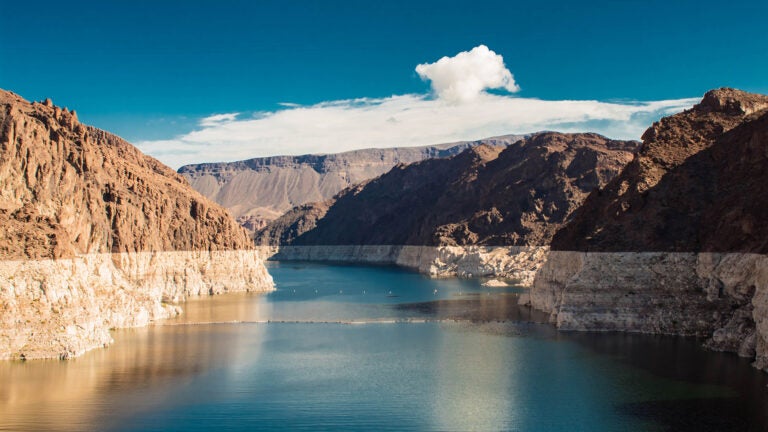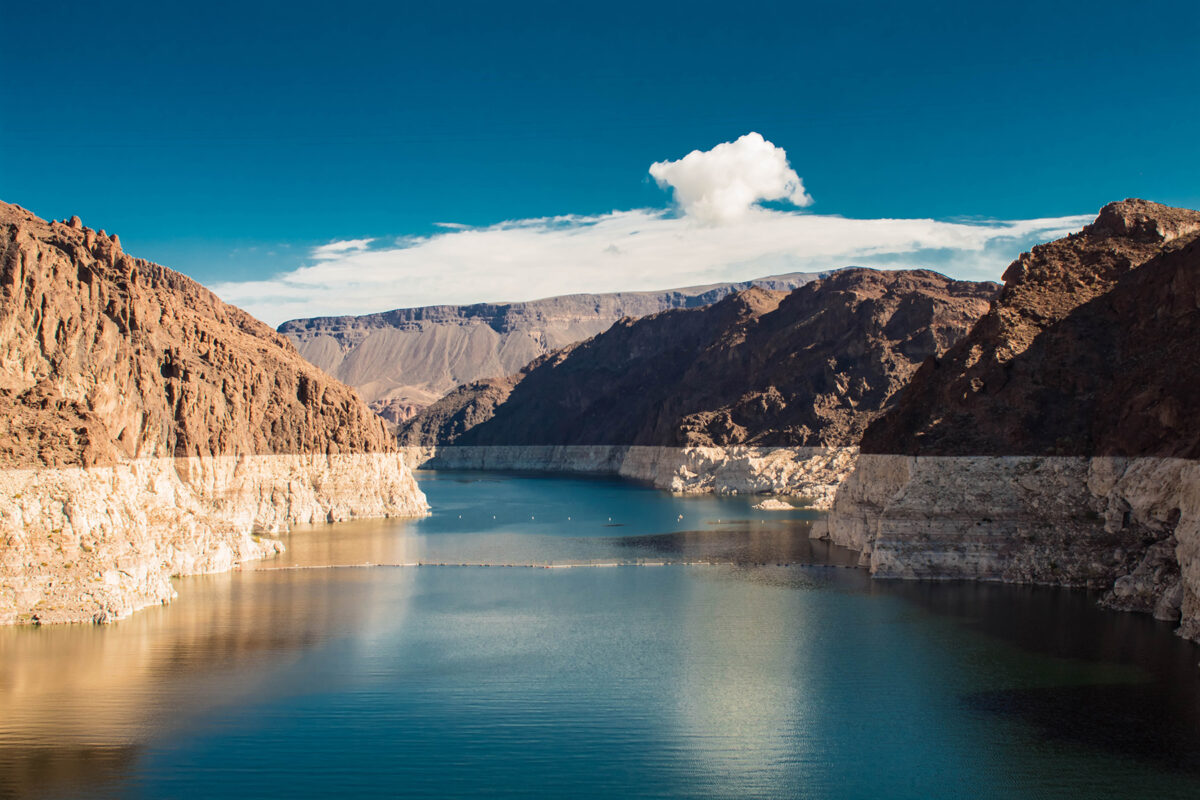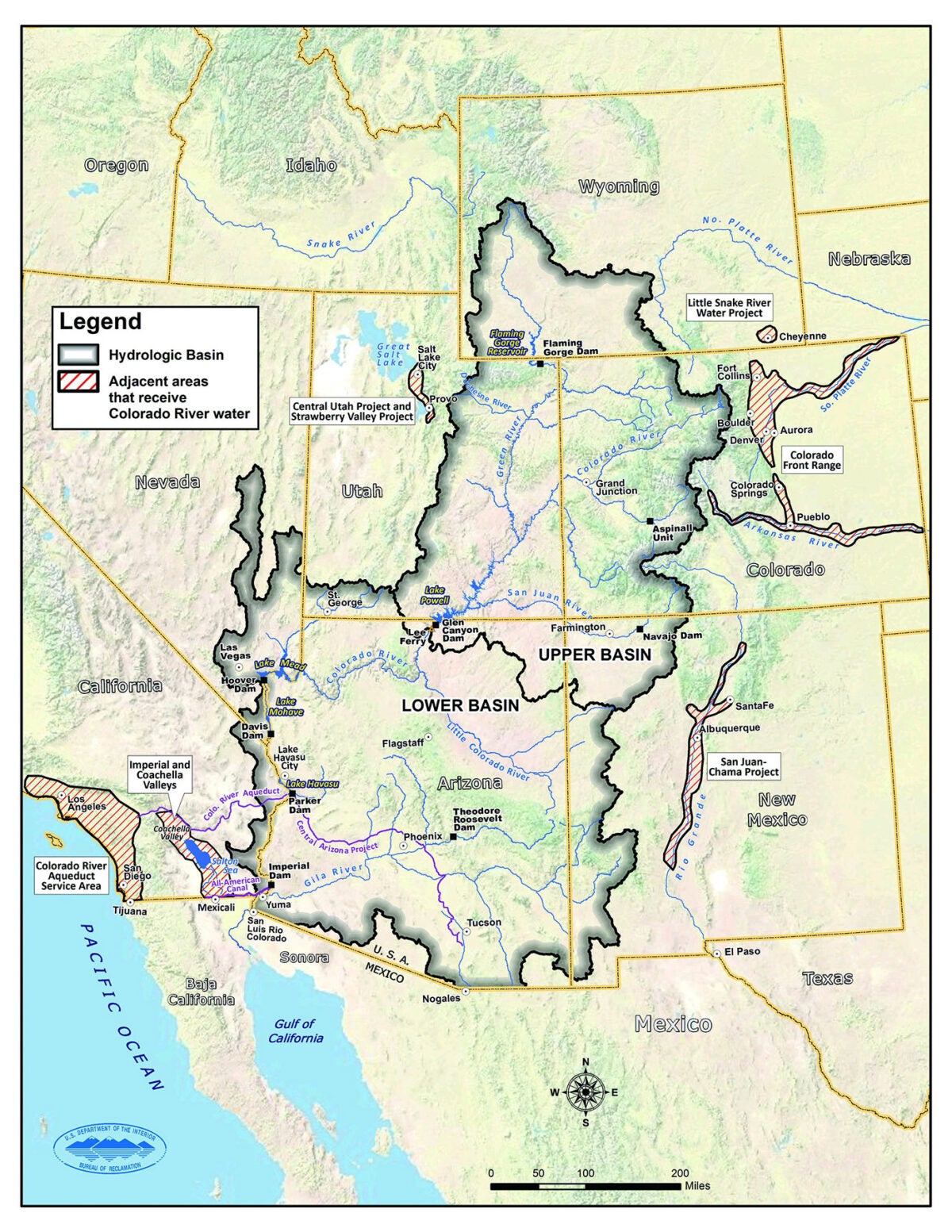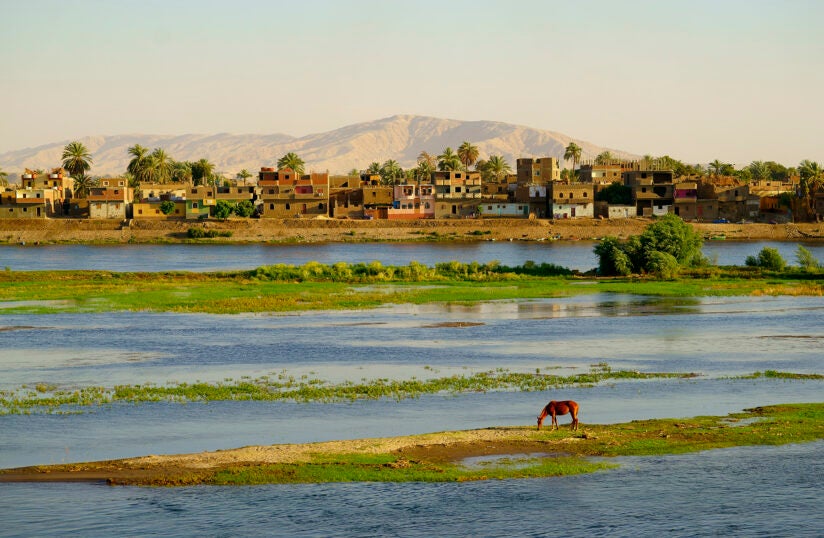
The low water level on the Colorado River is noticeable behind Hoover Dam. (Photo/iStock)
The water wars of the future are here today
Seven thirsty states, including California, are fighting over the dwindling waters of the Colorado River. USC experts look at how we got here — and why this was inevitable.
Once hailed as the “American Nile,” the Colorado River spans 1,450 miles and supplies nearly 40 million people across seven states plus northern Mexico with drinking water, irrigation for farmland and hydroelectric power. But after decades of drought and overuse, major reservoirs along the river are drying up.

As the Colorado River levels drop to historic lows, tensions are rising between the seven states that depend on its flow — Arizona, California, Colorado, New Mexico, Nevada, Utah and Wyoming. Their original agreement for distributing the river water lacked foresight and failed to account for dire circumstances like long-term drought.
The American Southwest now faces a crisis it knew was coming.
The fate of the Colorado now depends on the states’ ability — and willingness — to agree on a plan to slash water consumption and equitably distribute what’s left.
“When they made their original estimates of the river’s annual yield, states were aware that there probably wasn’t going to be that amount of water available in the years to come,” says Robin Craig, professor of law at the USC Gould School of Law. “Figures that were never true over historical time are increasingly not true now as we deal with the effects of climate change.”
Water wars: ‘Law of the River’ sparks a centurylong standoff

The Colorado River has been a point of contention for over 100 years. In 1922, the seven basin states endorsed the original Colorado River Compact. The agreement split the region into the Upper Basin, comprising Colorado, New Mexico, Utah and Wyoming, and the Lower Basin, which includes Arizona, California and Nevada.
The pact was the region’s first formal attempt at appropriating Colorado River water and has served as a cornerstone of the West’s “Law of the River” — the collection of legal documents governing the river’s water apportionments — for over a century.
Although the agreement defines how much water each state and Mexico should receive, the distribution was based on false assumptions about the river’s annual flow.
Until recently, the states have largely ignored the realities of the river, the truth of its annual rain and snowfall, and the vast, harsh desert climate of the West.
The agreement assumed that an average of 16.4 million acre-feet flowed from the Colorado River downstream each year. The average flow, though, is significantly less, said Craig, an expert in environmental and water law.
“The original compact was negotiated at the height of a record wet period,” said Craig, who holds the Robert C. Packard Trustee Chair in Law at USC Gould. “Depending on whose data you look at, average flow in the Colorado River hovers around 13.8 million acre-feet per year, and it could drop down to 12 or even 10 million. I’ve seen projections as low as 8 million acre-feet annually.”
Distorted from the start, the initial estimates set an unrealistic precedent that worsened with the impacts of climate change.
[In 1922] it was more important for states to get a political deal on the table.They figured they would sort out their differences later.
Robin Craig, USC Gould
“At the time, it was more important for states to get a political deal on the table,” Craig said. “They figured they would sort out their differences later.”
Under the 1922 pact, each basin receives an annual allotment of 7.5 million acre-feet of water from the Colorado River. In northern Colorado where the river begins, the Upper Basin is still required to deliver the Lower Basin’s portion in full, even in a drought like California is experiencing. In addition, a 1944 treaty requires the United States to give Mexico 1.5 million acre-feet each year.
Native American tribes still denied water rights
For many American Indian tribes in the West, the river is a mirage perpetuated through legalized oppression. They cannot reach it, and the water does not reach them. The Navajo Nation in Arizona, among others, has historically and repeatedly been denied access to the Colorado River, despite having a legitimate legal claim to its resources.
The 1922 pact makes only one reference to tribal water rights in a single sentence that reads: “Nothing in this compact shall be construed as affecting the obligations of the United States of America to Indian tribes.”
Several tribes have yet to receive their full share of the Colorado River. The U.S. Supreme Court will hear the Navajo Nation argue for its allotment as part of a case filed against the state of Arizona.
“Tribes were, if not being actively discriminated against, at least legally ignored,” Craig said. “We’re still dealing with the historical injustice that several tribes — many of whom were dislocated and put on the worst lands in the West to begin with — are entitled to water rights that have never been quantified and certainly never delivered.”
In water wars, California is ‘first-in-time, first-in-right’
The Colorado River winds its way from the Rocky Mountains, through the American Southwest to the Gulf of California.

To the chagrin of six basin states, California is first in line for the water, receiving an annual allotment of 4.4 million acre-feet from the Colorado River — the most of any state.
The Golden State is first in line because its use of the Colorado River for irrigation began during the Gold Rush of the 1840s.
“The highest priority goes to whoever first accessed the water and put it to beneficial use — or in other words, who made the original investment,” said Shon Hiatt, an associate professor of business administration at the USC Marshall School of Business. “Anybody else that comes up would be considered a minority water rights holder, so they only get their share if there’s enough left from the people ahead of them.”
Earlier this year, the seven basin states issued two rival proposals: One from California stresses its first-place status under the Law of the River. Another from the other six basin states argues that the river’s water deficits make the original agreement impractical.
At the time that this story was published, negotiations were at an impasse.
“California as a senior water rights holder is still demanding its share of 4.4 million acre-feet, which doesn’t allow for variation in the river’s actual water supplies,” says Hiatt. “States can compromise by maintaining their annual allotments as a percentage, though I don’t foresee California letting up in negotiations. The only way to force the state to compromise would be through congressional action.”
The ‘American Nile’ is one of several battlegrounds in the global water wars
Halfway around the world lies a river in crisis. The true Nile River — the longest on the planet and the lifeblood of more than 300 million inhabitants in East Africa — is the site of a similar, long-running conflict over water rights.

“The story of the Nile is our story, too. It’s somehow a window into the future to see ourselves under the rising in both climate fluctuations and water uses,” said Essam Heggy, a scientist and founding member of the USC Viterbi School of Engineering’s Arid Climates and Water Research Center and an affiliate of the NASA Jet Propulsion Laboratory.
“Like the American Southwest, the Nile River Basin is under great pressure due to decades of increased water consumption, droughts and upstream damming. Combined, the three drivers are significantly altering the river flow. The environmental impacts are often minimized to build more hydropower dams or extend lucrative farming activities that are exogenic to the river system,” says Heggy.
“The last few decades of disbelief in water and climate sciences were enough to bring Egypt, the most downstream country of the Nile Basin and fully relying on its water, from one of the fast-growing African economies to one of the most economically vulnerable nations on the planet.”
Heggy emphasizes that although the Nile is thousands of miles away from California, its story is essential to the U.S. given these shared challenges.
Unlike the case of the Colorado River, where academic institutions are exploring the risks associated with these challenges to support proper long-term mitigation measures, interest and lobbying groups supporting the increase in hydro dams on the Nile are minimizing risks of water shortages and environmental impacts, ignoring lessons learned from other mega-dams where these damages were irreversible.



